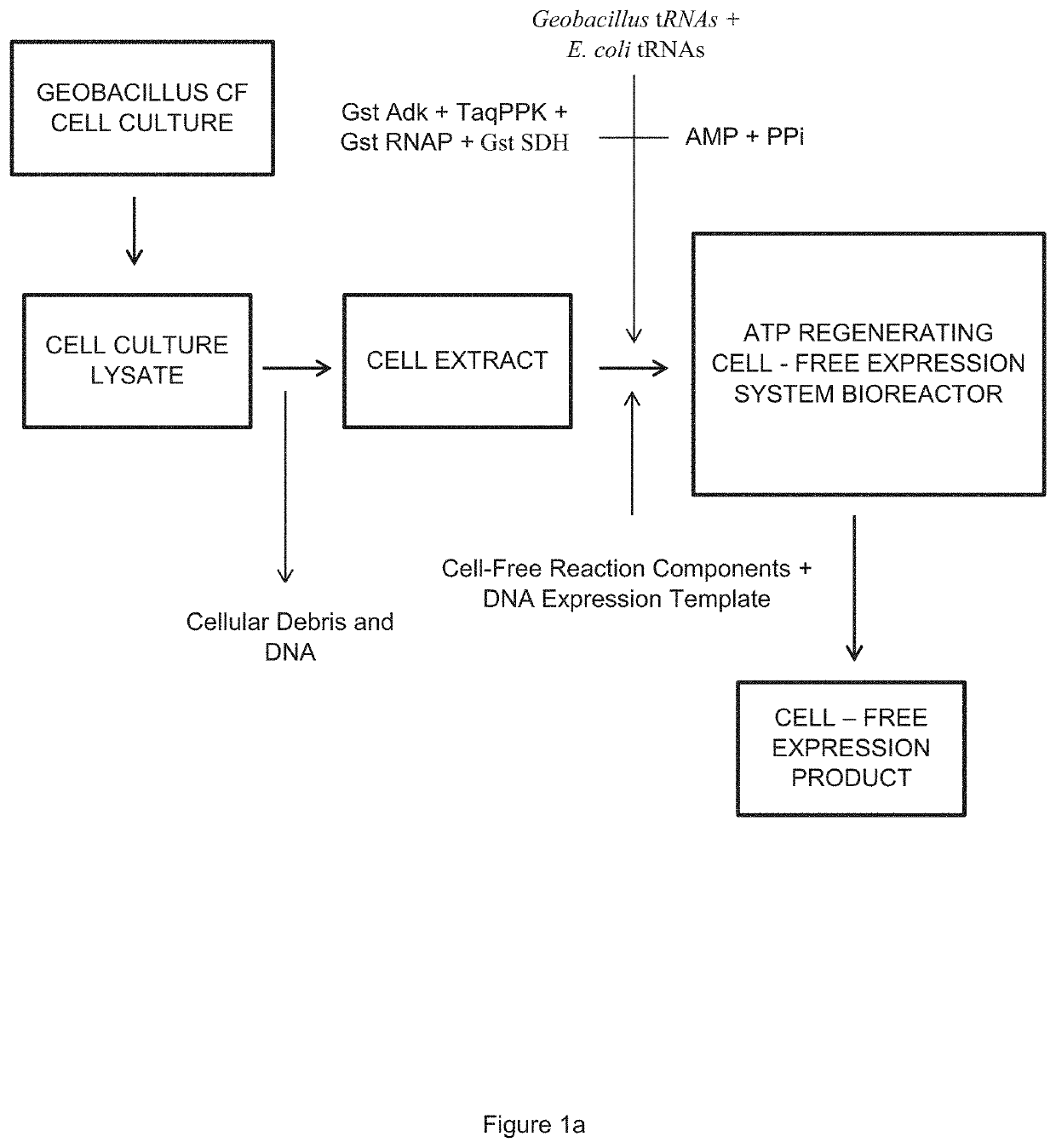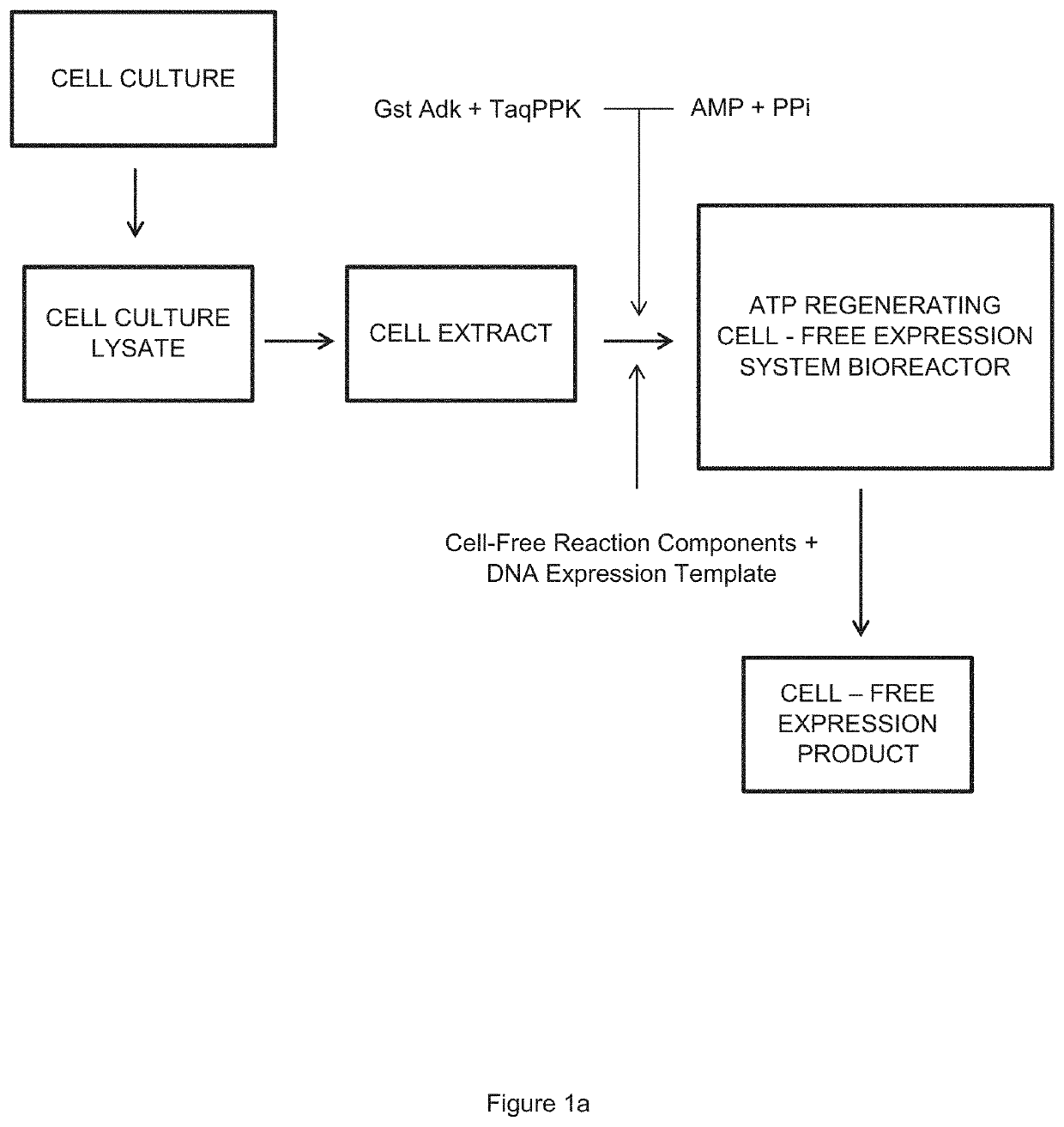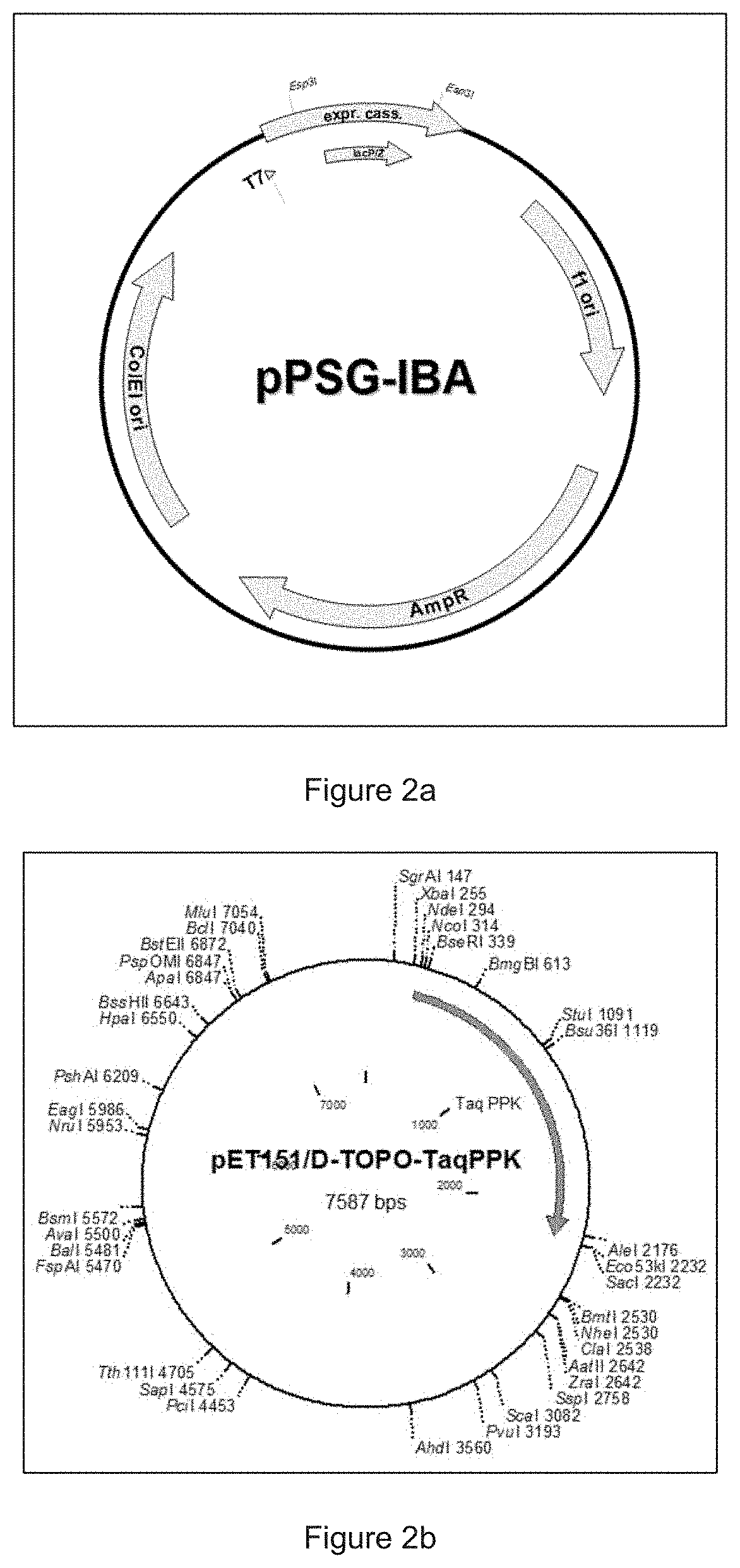Cell-Free Expression System Having Novel Inorganic Polyphosphate-Based Energy Regeneration
a cell-free and inorganic polyphosphate technology, applied in the field of cell-free expression systems, can solve the problems of limited use of vivo systems as protein production technologies, short reaction duration of active protein synthesis, and impracticality if not wholly ineffective vehicle for protein expression, so as to improve reaction stability, increase reaction efficiency, and prolong reaction time
- Summary
- Abstract
- Description
- Claims
- Application Information
AI Technical Summary
Benefits of technology
Problems solved by technology
Method used
Image
Examples
example 2
agPPK Isolation and Purification
[0128]The present inventors demonstrated the isolation and purification of Gst AdK and TaqPPK, which purified proteins were utilized in subsequent assays as described below. Specifically, Gst AdK and TaqPPK were expressed and isolated utilizing the methods as generally described herein. Referring to FIG. 7, the purified, recombinant proteins were analyzed on a 4-20% SDS PAGE. The gel being stained with coomassie dye.
[0129]Specifically, aliquots of the purified proteins were analyzed on SDS PAGE for purity and correct size. A previously test-purified PPK protein (PPK) was used as an additional size marker for the lot purification of the recombinant TaqPPK (PPK fractions 1-3). All fractions eluted from the purification column are demonstrated as pure and show the correct size of around 74 kDa. The purified Gst AdK shows no contaminant proteins and has the correct size of around 25 kDa.
example 3
dK / PPK ATP Energy Regeneration
[0130]The present inventors demonstrated the coupled AdK / PPK_ATP regeneration capability of the invention through a commercially available ATP determination assay. Here, the present inventors employed Life technologies, D-Luciferin, A22066 to verify functionality of the Gst AdK and / or PPK proteins, (in this embodiment derived from E. coli), in ATP regeneration.
[0131]In this embodiment, in addition to the standard 200 μl assay components, the following materials may be added to the assay, with the results being provided in FIGS. 4-6.[0132]i) 10 μM ATP[0133]ii) 5 μl Gst AdK[0134]iii) 5 μl PPK derived from E. coli (exemplary only)[0135]iv) 50 μl polyphosphate (1 mg / ml stock solution)
[0136]As demonstrated in FIGS. 4-6, these data generally demonstrate the enhanced ATP regeneration capabilities of the invention's AdK / PPK-PPi ATP energy regeneration system, and its improvement over ATP alone, as well as traditional PEP / PK energy supplementation. Specifically,...
example 4
nergy Regeneration at Variable Polyphosphate Concentrations
[0137]The present inventors demonstrated coupled Gst AdK / TaqPPK energy regeneration may be achieved at variable polyphosphate concentrations through a commercially available ATP determination assay. Specifically, a standard reaction setup was varied in the amount of added PPi. The luciferase signal (RLU) was measured over time (min).
[0138]As demonstrated in FIG. 8, one concentration range that maintained the equilibrium of the reaction was determined to be between approximately 0.2-2 mg / ml PPi. Other concentration ranges were determined to maintain the equilibrium of the reaction. Specifically, such ranges were determined to be between 0.1-4 mg / ml PPi, and / or 0.5-0.6 mg / ml, and / or 0.1-7 mg / ml. As demonstrated in FIG. 8, some additional ATP regeneration was found within the functional ranges, including, but not limited to approximately 0-48 mg / ml and higher.
[0139]In one embodiment, a standard reaction setup for 100 μl lucifer...
PUM
| Property | Measurement | Unit |
|---|---|---|
| concentration | aaaaa | aaaaa |
| density | aaaaa | aaaaa |
| ATP energy | aaaaa | aaaaa |
Abstract
Description
Claims
Application Information
 Login to View More
Login to View More - R&D
- Intellectual Property
- Life Sciences
- Materials
- Tech Scout
- Unparalleled Data Quality
- Higher Quality Content
- 60% Fewer Hallucinations
Browse by: Latest US Patents, China's latest patents, Technical Efficacy Thesaurus, Application Domain, Technology Topic, Popular Technical Reports.
© 2025 PatSnap. All rights reserved.Legal|Privacy policy|Modern Slavery Act Transparency Statement|Sitemap|About US| Contact US: help@patsnap.com



